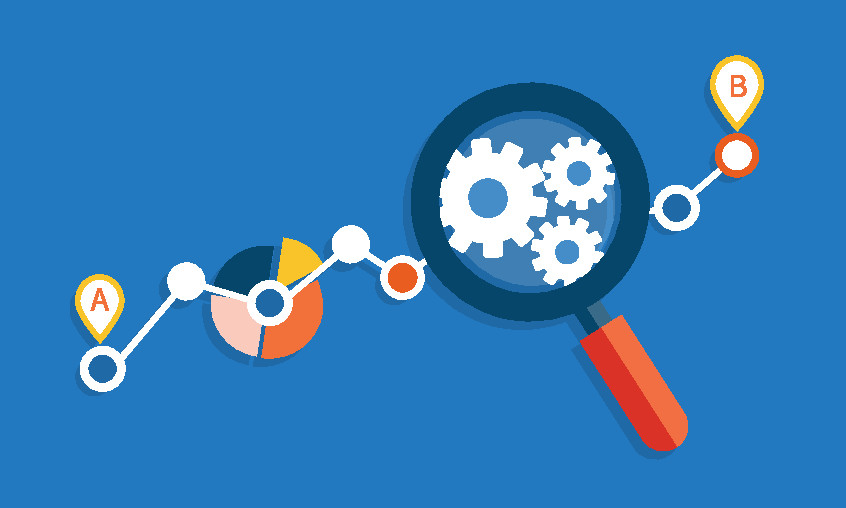Most business owners think that implementing a governance program to monitor their data management program will take care of all data quality issues. They need to understand that while the two practices are closely linked, merely the activation of the monitoring scheme will not resolve issues related to the quality of information. Organizations need to know how they can successfully apply data quality practices to data governance programs.

Integrating quality assurance measures into the supervisory plan will ensure that standardized elements are available across the enterprise at all times. In fact, businesses must incorporate such attributes in their data governance strategy right at the beginning so that the initiative is optimized from the start. Organizations must use the following steps to integrate data quality characteristics in their governance programs.
1. Conduct Data Profiling Regularly
It is impossible to govern assets effectively if you are not fully aware of their exact composition and condition. Data profiling, therefore, becomes a key activity that can give you an insightful understanding of an element’s source, structure, content, and relationships. Organizations must ensure that profiling is conducted right at the outset when an item is being entered into their ecosystem. Conducting the exercise at such an early stage will ensure that only correct and standardized elements are included in the system. The governance program will benefit from efficient profiling as it will help meet some of the initiative’s objectives like data standardization. It will also be helpful in metadata creation and defining appropriate usage rules.
2. Use Data Quality Metrics To Measure Governance
Data quality is a measurable exercise and organizations use different metrics to track their programs. These metrics can be extended to assess the effectiveness of the governance program as well. Since the factors are directly related to the standard of elements, they will give a full view of whether the monitoring program goals are being achieved or not. Governance involves the creation of policies and procedures for handling different types of elements being accessed by the organization. Integrating the metrics for evaluating the quality of these elements, into the corresponding monitoring policies will help in ensuring that any inconsistency is spotted immediately. This will be helpful in running the governance program in an optimized state.
3. Integrate Data Quality Factors Into Governance Functions
This step is an extension of the previous one and ensures that data quality concerns are effectively addressed through governance. In order to effectively apply data quality practices to data governance, organizations have to include the relevant factors into each function of the monitoring plan. Various applications are used for keeping a close watch on the different information management processes. The relevant stakeholders have to study the flow of data within each application to identify the locations where an inspection metric can be included. The users can measure these factors to know whether an application id being executed optimally or not.
4. Create A Well-defined Remediation Strategy
Inconsistencies can arise in even the most efficient environments. Organizations need to have a strategy in place to identify and remove errors. It is essential that businesses define an in-depth remediation plan to address the issues. They can identify the areas where the initiative is not reaching up to the preset quality standards. Then appropriate corrective measures must be applied to eliminate the errors. Maintaining a log of the defects and the corresponding actions can help in performance assessment. Enterprises can understand the nature of problems that are occurring at regular intervals. This, in turn, will help in discovering the root cause that is making a process inefficient.
5. Devise A Firewall To Isolate Bad Data
Information elements do not remain in a uniform state within an organization. They undergo transformations and enrichment to fulfill different objectives. Data is also transferred from one section to another to enable them to carry out their functions. It is common for items to develop inconsistencies during transfer or transformation. In case, an element becomes inaccurate, it is essential that it is prevented from interacting with other assets and making them inconsistent as well. Organizations have to devise a firewall to isolate bad data until the remediation measures are implemented. This will help in protecting other valuable elements and ensuring that the problem remains limited to a small section.
6. Define Stewardship Roles With An Eye On Quality
Governance is largely a technical program but human stewards play a key role in its success. Choose people for stewardship roles with an eye on ensuring quality. Pick individuals who understand the business context in which a specific element has been picked. It will not be ideal to select only technically proficient users for these roles. A good steward is adept at executing the technological processes but also has an in-depth understanding of how an element fulfills a specific business goal.
Conclusion
Businesses must apply data quality practices to data governance to ensure their information assets are always present in an optimized state. They must integrate data standardization measures into different governance procedures to align both the practices efficiently.
